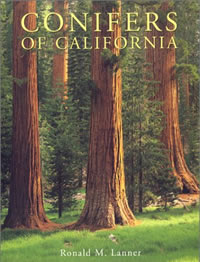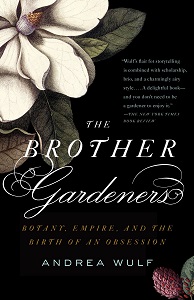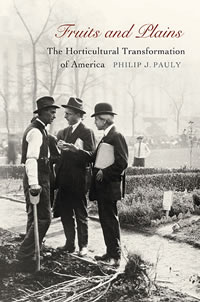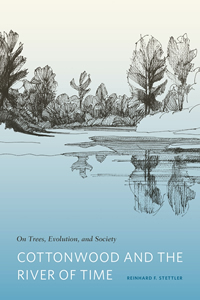 Bamboo for Gardens is written by Washington State resident, Ted Meredith. While most of the photos are close-ups of their subject, it’s fun to see rhododendrons or a Douglas fir lurking in the background of wider shots.
Bamboo for Gardens is written by Washington State resident, Ted Meredith. While most of the photos are close-ups of their subject, it’s fun to see rhododendrons or a Douglas fir lurking in the background of wider shots.
Wherever you live, this would be an important and useful book. While there is the expected A-Z encyclopedia of species, it is unusual that the introductory material–such as culture, propagation, uses in the landscape–fills more than half the book. Some unexpected treasures can be found here, including the use of bamboo in both traditional and modern economies, and tips on eating bamboo.
You will learn, for example, that the shoots of Qiongzhuea tumidissinoda “are considered exceptional.” The fun continues in the encyclopedia section as we learn that this same, nearly unpronounceable species, which hails from central China, is harvested for walking sticks, and “…is the subject of history, myth, and fable in Chinese culture, dating back to at least the Han Dynasty in the first or second century B.C.”
While the author keeps the writing interesting, the more mundane information is very solid, including his discussions of how to deal with “…an attack from the demonic plant that invaded unexpectedly and ceaselessly, and could not be stopped or killed.” With the voice of experience and fondness that one might expect to be used on an errant puppy, Meredith carefully explains the different methods of containment for running bamboo.
Excerpted from the Summer 2012 Arboretum Bulletin.
 First Lady Michelle Obama’s new book,
First Lady Michelle Obama’s new book,  Conifers of California is a delightful introduction to many of our native conifers, as well as the incredible diversity of these cone bearing trees to be found further down the coast. Author Ronald M. Lanner writes what could be best described as a biography of each tree, telling the natural history and the interaction of each with humans and animals. While there are helpful descriptions, (including “At a distance”, “Standing beneath it”, and “In the hand”), this is not primarily a field guide.
Conifers of California is a delightful introduction to many of our native conifers, as well as the incredible diversity of these cone bearing trees to be found further down the coast. Author Ronald M. Lanner writes what could be best described as a biography of each tree, telling the natural history and the interaction of each with humans and animals. While there are helpful descriptions, (including “At a distance”, “Standing beneath it”, and “In the hand”), this is not primarily a field guide. Andrea Wulf, in The Brother Gardeners, starts at the beginning of the 18th century. Up to that time gardening was “traditionally the preserve of the aristocracy…now, amateur gardeners began to take an obsessive interest in their smaller plots.” Her focus is on the transformation in England, but much of this was fueled by the interchange with American gardeners and particularly the importing of American plants to English gardens.
Andrea Wulf, in The Brother Gardeners, starts at the beginning of the 18th century. Up to that time gardening was “traditionally the preserve of the aristocracy…now, amateur gardeners began to take an obsessive interest in their smaller plots.” Her focus is on the transformation in England, but much of this was fueled by the interchange with American gardeners and particularly the importing of American plants to English gardens. Anna Pavord’s The Naming of Names sets the groundwork for the system of nomenclature we use so freely today. More than just names, this book chronicles the development of human understanding of plants, how they live and propagate, but most importantly how we’ve come to identify and categorized them.
Anna Pavord’s The Naming of Names sets the groundwork for the system of nomenclature we use so freely today. More than just names, this book chronicles the development of human understanding of plants, how they live and propagate, but most importantly how we’ve come to identify and categorized them. Defiant Gardens: Making Gardens in Wartime (2007) is not an easy book to read. The descriptions of the front lines, prison camps, Jewish ghettos, and Japanese internment camps from the first half of the 20th century are brutal, detailed, and very unsettling.
Defiant Gardens: Making Gardens in Wartime (2007) is not an easy book to read. The descriptions of the front lines, prison camps, Jewish ghettos, and Japanese internment camps from the first half of the 20th century are brutal, detailed, and very unsettling. Philip Pauly was a professor of history at Rutgers University. His book, Fruits and Plains , was published by Harvard University Press. These are high academic credentials for a book that at first glance appears to be about gardening. But this is no ordinary gardening book. As suggested by the sub-title, The Horticultural Transformation of America, this is a serious study of the importance of horticulture to all aspects of American life particularly from the founding of the country well into the 20th century.
Philip Pauly was a professor of history at Rutgers University. His book, Fruits and Plains , was published by Harvard University Press. These are high academic credentials for a book that at first glance appears to be about gardening. But this is no ordinary gardening book. As suggested by the sub-title, The Horticultural Transformation of America, this is a serious study of the importance of horticulture to all aspects of American life particularly from the founding of the country well into the 20th century. Sir Joseph Dalton Hooker: Traveler and Plant Collector (2001) by Ray Desmond is a marvelous travelogue, masking as a biography. Our hero took two multi-year expeditions (to Antarctica, New Zealand, and Australia from 1839-1843; and to India and the Himalayas from 1847-1851) as well as shorter trips to Morocco, Palestine, and the United States.
Sir Joseph Dalton Hooker: Traveler and Plant Collector (2001) by Ray Desmond is a marvelous travelogue, masking as a biography. Our hero took two multi-year expeditions (to Antarctica, New Zealand, and Australia from 1839-1843; and to India and the Himalayas from 1847-1851) as well as shorter trips to Morocco, Palestine, and the United States. Cottonwood and the River of Time by Reinhard Stettler explores an unlikely topic, cottonwood trees and their kin including poplars and aspens. A retired University of Washington professor of forestry, the author writes an engaging natural history beginning with a single tree, an old matriarch near the Snoqualmie River. While eventually global in scope, many of the examples continue to be set in the Pacific Northwest.
Cottonwood and the River of Time by Reinhard Stettler explores an unlikely topic, cottonwood trees and their kin including poplars and aspens. A retired University of Washington professor of forestry, the author writes an engaging natural history beginning with a single tree, an old matriarch near the Snoqualmie River. While eventually global in scope, many of the examples continue to be set in the Pacific Northwest.